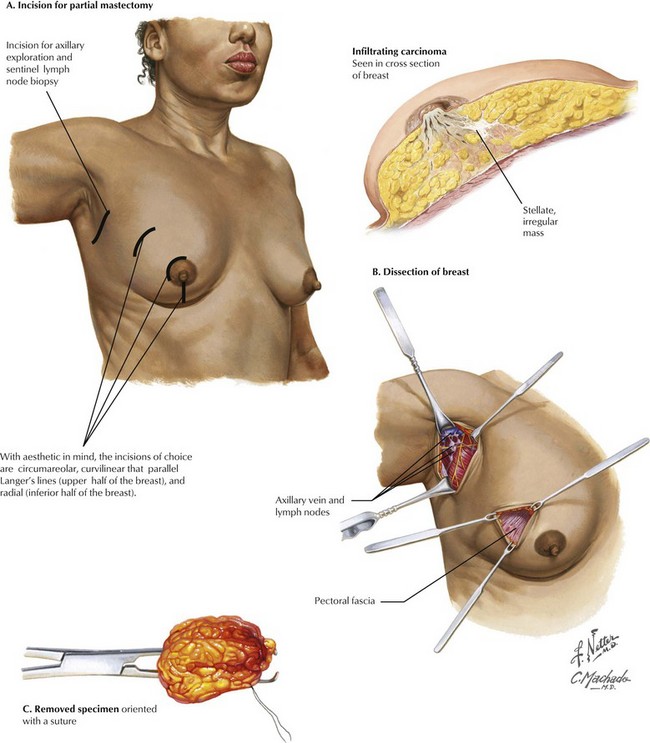Mastectomy
Partial Mastectomy
With breast conservation and aesthetics the focus of partial mastectomy, the choice of incision is of great importance (Fig. 46-1, A). Circumareolar incisions provide good cosmesis. Curvilinear incisions that parallel Langer’s lines of tension in the upper half of the breast also work well. In the inferior half of the breast, radial incisions provide good cosmesis. For palpable lesions, the incision should be made directly over the tumor. For nonpalpable tumors localized with a wire, care should be made to make the incision over the expected location of the tumor and not necessarily at the insertion of the wire.
Buy Membership for Surgery Category to continue reading. Learn more here








